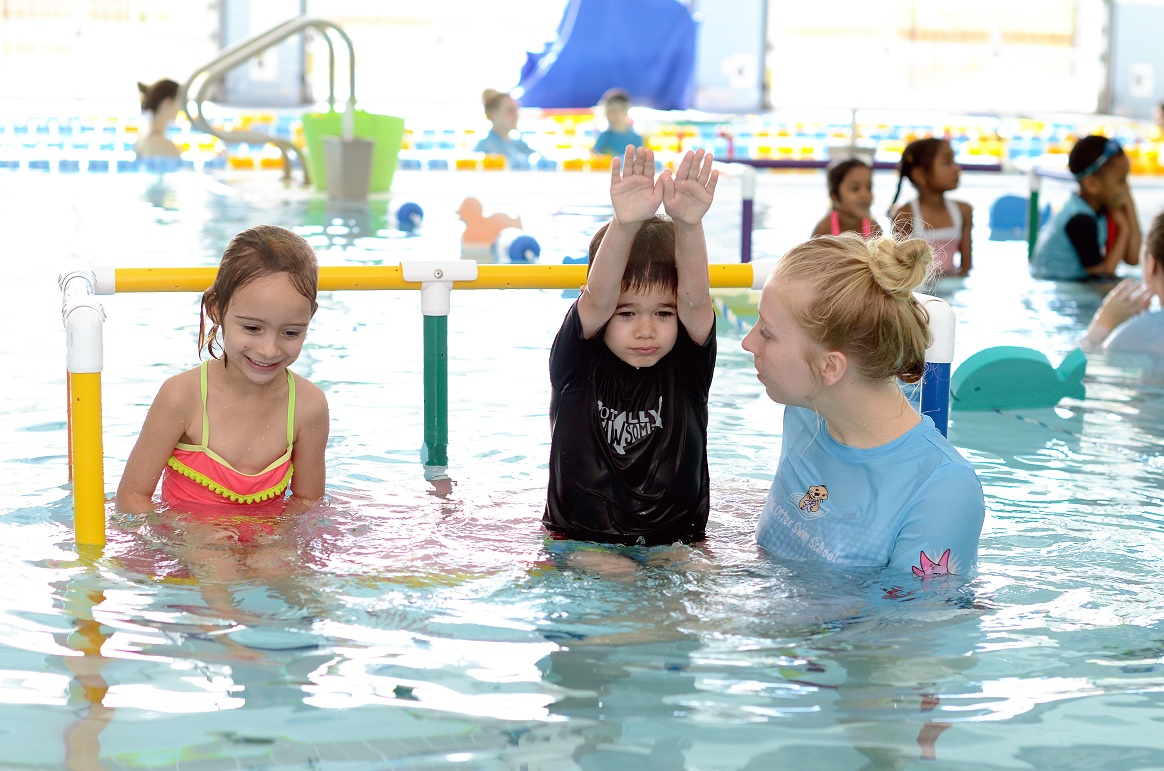
What is one of the first thing kids want to do after they’ve learned to swim? Most kids want to learn to dive!
They see older kids and adults dive. They see athletes in the Olympics do amazing dives. So they want to try it themselves.
How can we create safe diving spaces and teach them to dive safely? Safe diving can happen by following safety rules when diving into pools or any other body of water.
What are the safe diving tips everyone – kids and adults – should follow? Most diving incidents are preventable when these tips are followed:
- Never dive into shallow water.
- ALWAYS enter feet first to test water depth when in familiar and unfamiliar water.
- The American Red Cross recommends a minimum of 9 feet of water depth for head-first dives including dives from pool decks.
- Make sure you are clear of any obstacles that may get in the way when diving and always know the path you will take – as you go down and come up – before going in.
- Only dive in clear water, checking for objects such as logs, stumps, boulders and changing depths of uneven water bottoms.
- Keep your hands in front of you and tuck your chin tucked into the chest till entering the water.
- Never, ever swim – or dive – alone.
What are the benefits of diving? Diving is lots of fun! You get great exercise and learn tremendous body control. It is also very exhilarating….when you do it safely. However, failing to take proper precautions and failure to dive safely can result in serious injury.
What are the risks of improper and unsafe diving? Improper diving can lead to injuries to the head, neck, and spine. This is specifically why taking proper precautions is crucial.
What is the biggest danger in diving? Diving in shallow water.
More than 95% of diving incidents occur in less than five feet of water. And they happen when there is no adult supervision.
“Obviously, brain injury is our utmost concern,” Dr. Julie Gilchrist says, a pediatrician and medical epidemiologist at the Center for Disease Control Injury Center. “It’s so preventable and unfortunately, hospital care doesn’t alter the outcome. There’s not a lot we’re able to do for brain injury. That’s why prevention is so important.”
There is no room for distractions.
It’s necessary for kids to have adult supervision when they are around water whether they are swimming or not. When there is swimming activity, adults need to be fully alert to everything they are doing. Swimming is the most popular recreational activity for children and teens between the ages of 7 and 17. It’s also one of the most common places for accidental deaths to take place – and they can take place in mere seconds.
Parents should not just be nearby or within earshot. They must be engaged. They cannot be buried in conversation or phones.
Dr. Gilchrist of the CDC recommends children learn how to swim by taking swimming lessons. Taking swimming lessons from a swimming school also ensures that they learn water safety skills and are comfortable in the water.
How prevalent is injury? Nearly 26,000 individuals are treated in emergency departments for diving-related injuries according to the U.S. Consumer Product Safety Commission (CPSC). Approximately 800 of those injuries occur among teens or young adult males and the majority of these injuries result in paralysis.
Prevention rules are not complex. But they are crucial. When diving, you must always obey the diving rules shared in this post – only diving in designated areas – never in areas too shallow for diving safely.
Little Otter Swim School’s team members are passionate about teaching kids to swim and be safe as they enjoy the water. Learn more about what makes Little Otter different.


Conversations